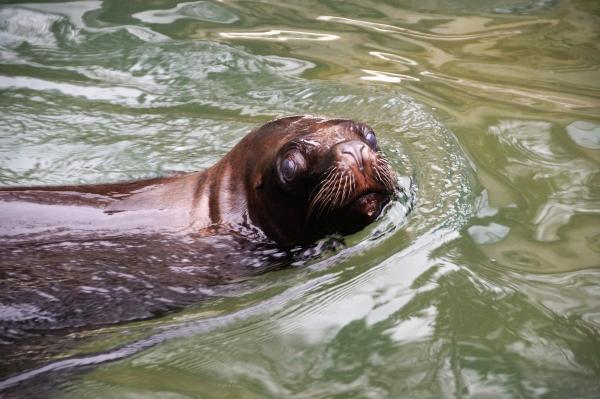Here’s the problem. The Australian sea lions, and there are roughly 10,000, continue to decline in part because of endemic hookworm, a parasite that kills the pups. There are many other causes for sea lion decline, including us, but hookworm may account for 40% of pup deaths, which are already down by 50%.
“Uncinaria sanguinis is a blood-feeding small intestinal nematode.”
It is endemic in the sealion population and causes a range of illness. Ivermectin is an anthelmintic, but its use is “off-label” and given by injection. It has an amazing track record with cure rates for seals and sealions of nearly 100%, at least in seasons where mortality was high. For times of lower mortality, a survival benefit was not as apparent, but it did seem to mitigate the hookworm infestation's anemia, inflammation, and other complications.
Of course, wrangling sea lion pups up for injection is not the easiest of projects, perhaps somewhere between convincing the vaccine-hesitant to getting Robert Kennedy, Jr to get vaccinated. So the researchers were interested in whether a topical application might be efficacious. The study was conducted at Dangerous Reef in South Australia in 2017 and involved 400 sea lion pups. Without the need for sociodemographic factors, the study divided the pups into three groups, the untreated controls, those given topical, and those given injectable ivermectin. The injectable dose was based on prior experience; the topical amount was based on extrapolating effective levels in cattle.
The study was randomized, the assessment blinded, and in place of sociodemographic, we have morphometrics (body sizes and weights). Age was determined by length, the pups marked by hair shaving and “bleach.” Blood samples were taken, and dead pups, when found, underwent autopsy. Eighty-five pups were “recruited” for the study, and 90% were seen at initial follow-up, 70% at the second follow-up examination.
- Of the control group, 80% of those with hookworm at recruitment demonstrated hookworm in follow-up
- The ivermectin groups (topical and injected) both faired equally well, with reduction in initial infections by 95%
- A side benefit for the ivermectin treated sea lions was an additional reduction in lice by about 66%
- There were eight deaths, one among the controls, four among those with topical ivermectin, and 3 with injectable ivermectin. None of the deaths were associated with hookworm infections but were attributed to trauma or starvation. Only the control pup had evidence of continued hookworm infection.
The researchers noted that the study was not large enough to detect a treatment survival benefit but was intended to demonstrate a less invasive treatment option. If only we could perform the same type of randomized, controlled trial on ivermectin for other off-label uses, perhaps it would dispel misinformation. Sealions were afforded the gold standard clinical trial; you would think we could do the same for other species.
Source: Topical ivermectin is a highly effective seal ‘spot-on’: A randomised trial of hookworm and lice treatment in the endangered Australian sea lion International Journal for Parasitology: Parasites and Wildlife DOI: 10.1016/j.ijppaw.2021.11.002




